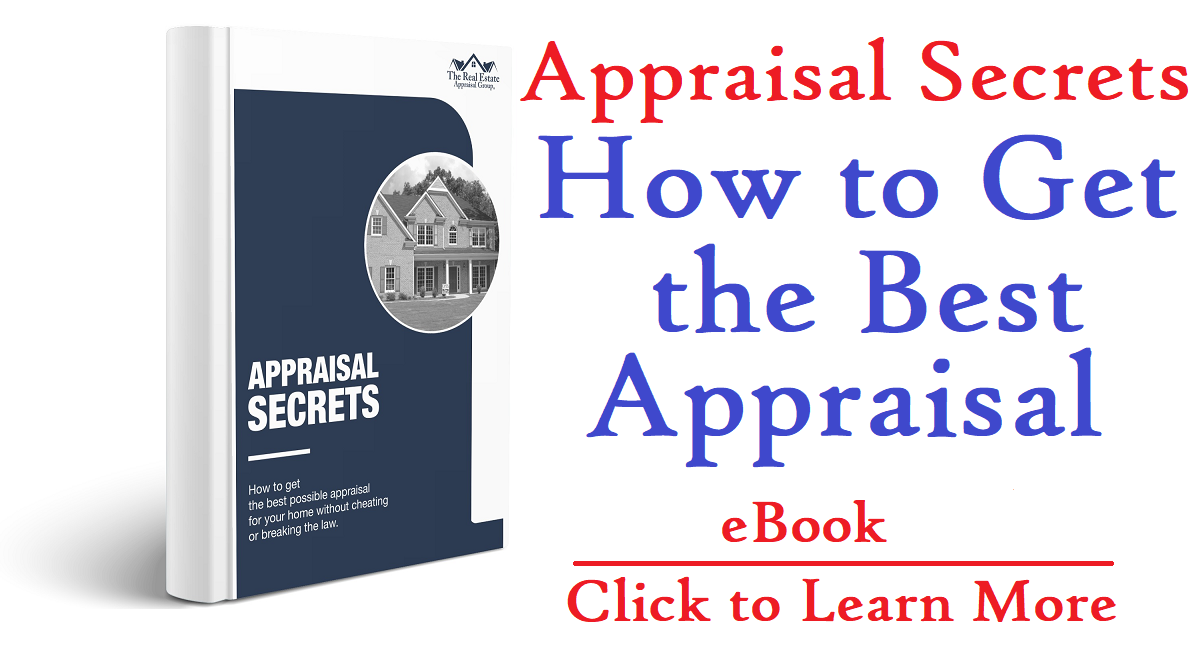
by Jonathan Montgomery | Jun 10, 2015 | Uncategorized
If a real estate appraisal comes in too low, it doesn’t necessarily mean the appraiser made a mistake- but it might. The following is a short video explaining what to do if you actually A few months ago, we did a post on how to spot a bad real estate appraisal. The following short video explains how to formally present your concerns and questions to coerce the appraiser to take a second look. We’ve also put together some simple fill-in-the-blank templates to make this process as easy as possible- download links can be found at the bottom of the page. Challenging a Bad Real Estate Appraisal Templates: Template 1 Template 2 Jonathan Montgomery Founder and President of the The Real Estate Appraisal Group.He has been a real estate professional since 1998. He’s been a broker, and investor and now serves as an appraiser. He currently works as an appraiser, doing real estate appraisals in Washington D.C., Southern Maryland, and Northern Virginia. #treagroup...

by Jonathan Montgomery | Jun 4, 2015 | Real Estate Terminology, Uncategorized
All across the country, for the majority of neighborhoods, there is a general price range where most houses in the area will fall. Most neighborhoods have a spread of about 10-15%, meaning an area with a $100,000 average sale price would have a list range around $85,000-$115,000. When homeowners make the mistake of overbuilding, they put their home’s appraised value way outside of that window. This ties in with one of the most well-known saying in real estate: “location, location, location.” Let’s look at the example of the happy family of a father, mother with a baby girl on the way, and an annoying teenage son. They live in an area of mostly 1 story, 2 bedroom houses- but they really love the area. Instead of moving into a bigger house in another neighborhood, they decide to add another story onto their home, practically doubling the gross living space. This seems like a fantastic idea- the family stays in an area they love, watching their daughter grow up in the same neighborhood as their son . But now we come to 20 years down the road- after two kids are finished with or still in college, the two exhausted parents are ready to settle down in the countryside. It’s time to sell the house. After spending upwards of $150,000 on that second story, it seems irrational not to charge more for their house. As the median sold price in the neighborhood has bounced around $50-60k across the last few years, they decide to list their home at $200,000. A month later, they list at $190,000. After...

by Jonathan Montgomery | May 27, 2015 | Real Estate Terminology, Uncategorized
Split-level homes can be confusing when it comes to square footage. After a real estate appraisal, we sometimes get questions as to why a 2,000 square foot home was listed as a home with 1,200 square foot living space. Appraisers aren’t trying to rip you off or anything; they’re just following the law. Using the above example, let’s say your home was only measured at 1,200 gross living space- what happened to the other 800 square feet? If you have a home that even slightly qualifies as a split-level, or bi-level home, that extra square footage was most likely measured as below-grade. Living space in real estate is measured in two forms: above-grade and below-grade. Typically, appraisers use the ANSI (American National Standards Institute) or the AMS (American Measurement Standard). The “grade” would be the standard ground-level or elevation for the neighborhood. Where ever you would call the topography of the property “flat” determines where ground level is. Usually the street of the property’s address is a good reference (although this is not ALWAYS the case.) Above grade living space can be defined as “any area of the home that can be heated or cooled by the utilities and is completely above ground-level. If the floor in a room or section of your house is so much as one step below ground level, it can’t be factored into the gross living space. Above grade living space is always worth much more than below grade, except under some extreme or unusual condition. This is why it’s so difficult to measure split-level homes. Below grade living space is the same...

by Jonathan Montgomery | May 20, 2015 | FHA, Real Estate Terminology, Uncategorized
For a Federal Housing Administration (FHA) loan to be approved, a home has to meet more qualifications and standards than your average conventional loan. The roof can’t leak, the wires can’t show, the floors can’t creek, the paint can’t crack… and the list goes on. and on. As FHA appraisals are a bit more complex, real estate appraisers have to get additional certification to perform them. The real estate community usually simplifies whether or not a home will qualify for an FHA loan by whether or not it satisfies the 3 S’s: Safety, Soundness, and Security. The First “S” is Safety. In FHA terms, “Safety refers to the health, habitability and sanitary condition of the property.” The majority of properties that fail an FHA appraisal do so because they aren’t safe. This applies to places in the home that could potentially harm it’s occupants. Here are just a few of the most common safety hazards that cause homes to fail an FHA appraisal: Chipping or peeling paint in homes built before 1978 Damaged or missing handrails on stairs, decks, etc. Exposed electrical wiring (anywhere) Missing carbon monoxide and smoke detectors Mold or rot anywhere in the home Utilities not being safely grounded Outdated well or septic systems Poor topography (such as a yard that doesn’t divert water flow away from the house, or a large ditch in the back yard) Signs of termite infestation The biggest question you can ask yourself when it comes to the safety test is this: would I feel comfortable letting my kids play in this home? If the answer is no, some repairs or...

by The Real Estate Appraisal Group | May 7, 2015 | Uncategorized
Mum Isn’t Always the Word. In case you don’t know, real estate appraisers and most real estate professionals are bound by the Fair Housing Act. The Fair Housing Act exists to protect people against discrimination in the business based on a number of factors, the biggest being: “Race, color, national origin, religion, sex, familial status, or handicap.” This is all perfectly understandable- discrimination is wrong in any business. When it comes to real estate though, the Fair Housing Act can get in the way of a couple burning questions most clients have about the neighborhood, such as… Average Income. (Is it a poor neighborhood? We don’t want to be the wealthiest or poorest neighbors in the area.) Schools. (What are the schools like in the area? How many kids are in private school? ) Education. (Is the neighborhood mostly educated? Did most homeowners graduate high school or have a degree?) Religion. (There’s a Mosque/Church/Temple up the street… Is this neighborhood mostly Christian/Muslim/Jewish?) Sexual Orientation. (Is this a gay-friendly neighborhood?) Crime Statistics. (What’s the crime like in this area… will my children be safe here?) Environmental Concerns. (Is this a green neighborhood? Does most of the neighborhood recycle?) Anyone can understand how a client might be frustrated when their agent can’t share answers to these burning questions. Just because you can’t answer questions like this, however, doesn’t mean you can’t point your clients in the right direction to answer these questions for themselves. Below we’ve put together a list of websites that can easily be searched to research every issue above. Questions About Income While you can’t answer questions about...

by The Real Estate Appraisal Group | Apr 30, 2015 | Real Estate Terminology, Uncategorized
What is a Home Inspection? What is a Site Visit? Which One Do I Need? As real estate appraisers, clients are sometimes surprised at exactly how much of their property we need to see. Sometimes clients are surprised when we tell them the appraisal will take more than 5 minutes, other times they’re surprised when we tell them it won’t take 3 hours. Regardless of how long a home inspection or a real estate appraisal takes, we often get questions like: “So you’re not going to get on your back and squeeze through our crawl space to look for rot?” “You didn’t bring a ladder?” How will you get on the roof to see the chimney?” “How will you make sure our pool is working? You didn’t bring a snorkel? While there are a few similarities between the two, and in some places appraisers and inspectors look for the same thing, they ultimately serve very different purposes. A site visit is only part of a real estate appraisal, while a home inspection can usually be started and finished directly on site. In this short video, we explain the difference between a home inspection and a site visit. https://www.youtube.com/watch?v=9ajR0ytFARY For more short-and-sweet informative videos, visit our YouTube Channel. Jonathan Montgomery is the founder and president of the The Real Estate Appraisal Group, and has been a real estate professional since 1998. He has been a broker, an investor, and currently works full-time as an appraiser. He enjoys handling real estate appraisals in Washington D.C., Southern Maryland, and Northern Virginia. #TREAGroup...









Recent Comments